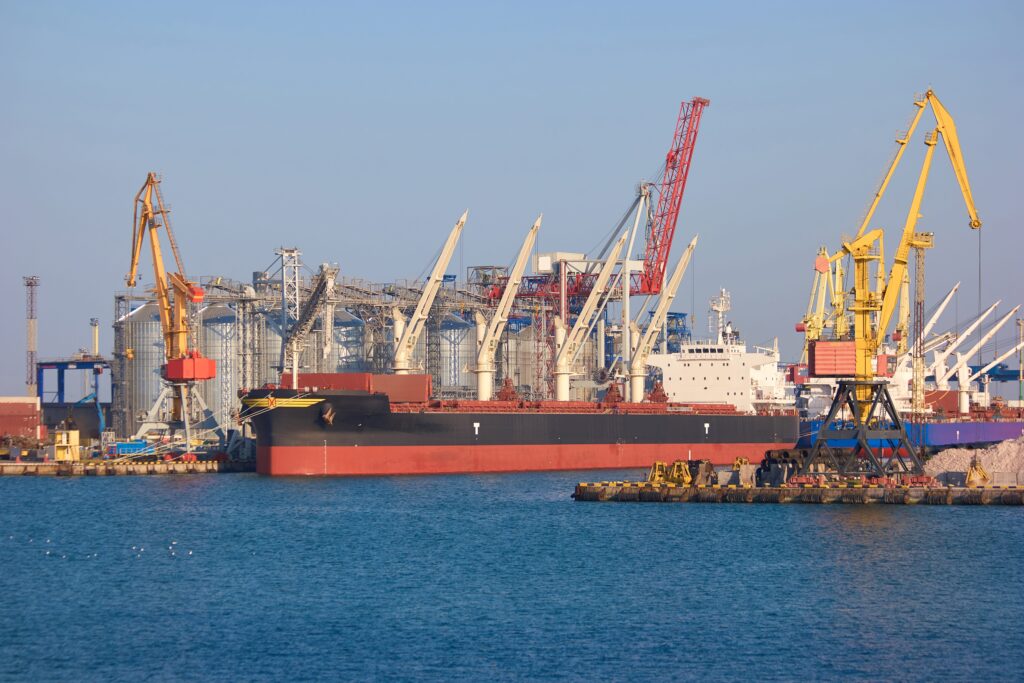Heavy Hauling: Strategies for Safe and Successful Transportation
Heavy hauling plays a crucial role in the logistics industry, ensuring the transportation of oversized and overweight cargo to various destinations. From construction machinery to

Freight shipping plays a critical role in supply chain management. It ensures the timely and efficient movement of goods from one location to another. However, managing freight shipping can be complex and challenging, often resulting in increased costs and delays. In this blog post, we will explore how you can simplify freight shipping and optimize your supply chain. We’ll provide valuable insights, practical tips, and strategies to streamline your operations and improve overall efficiency. Whether you are a small business or a large enterprise, these principles will help you enhance your logistics processes. So, let’s dive in and discover how you can take your supply chain to the next level.
Freight shipping involves the transportation of goods using various modes such as air, sea, or land. Understanding the fundamentals of freight shipping is crucial for optimizing your supply chain. By familiarizing yourself with key terms, modes of transportation, and shipping documentation, you can make informed decisions and effectively manage your shipments.
Before you can optimize your supply chain, it’s essential to assess your current processes. Conducting a comprehensive evaluation helps identify bottlenecks, areas for improvement, and potential cost savings. By analyzing your supply chain operations, you can identify inefficiencies and develop targeted strategies to overcome them.
Freight shipping is not without risks. To mitigate potential disruptions, it’s crucial to:
Enhancing supply chain visibility and leveraging data analytics can drive significant improvements in your logistics operations. Consider the following steps:
Real-life examples demonstrate the power of optimizing freight shipping and supply chain management. Here are a few case studies that showcase successful efforts in streamlining logistics operations:
In today’s environmentally conscious world, sustainable practices are crucial for responsible freight shipping. Consider adopting the following strategies:
Optimizing your supply chain and simplifying freight shipping processes can have a significant impact on your business. By assessing your current operations, streamlining processes, leveraging technology, and managing risks, you can improve efficiency, reduce costs, and enhance customer satisfaction. Remember, successful supply chain optimization is an ongoing effort that requires continuous evaluation and adaptation. As you embark on this journey, consider partnering with experienced logistics providers like PM Logistics Services, who can offer industry expertise and tailored solutions to meet your unique needs.
Factors such as cost, transit time, cargo type, and destination should be considered when selecting the optimal transportation mode. Conduct a thorough analysis and evaluate different options to determine the most cost-effective solution for your specific requirements.
Outsourcing logistics services to experienced providers offers several benefits, including access to industry expertise, established networks, streamlined operations, and cost savings. It allows you to focus on your core business activities while leveraging specialized knowledge and resources.
Implementing real-time tracking technologies and leveraging transportation management systems (TMS) can significantly enhance supply chain visibility. These tools provide visibility into shipment status, location, and delivery progress, enabling proactive management and timely decision-making.
Sustainable practices include reducing carbon emissions by using fuel-efficient transportation modes, optimizing packaging to reduce waste, and collaborating with environmentally friendly carriers and suppliers. These initiatives not only benefit the environment but can also lead to cost savings and improved brand reputation.
Supply chain optimization is an ongoing effort. Regularly evaluate your processes, measure key performance indicators, and identify areas for improvement. Set up a cadence for periodic assessments to ensure your supply chain remains efficient and aligned with your business goals.
Remember, every supply chain is unique, and it’s essential to tailor the optimization strategies to your specific requirements. By implementing the tips and strategies outlined in this blog post, you can simplify your freight shipping processes, optimize your supply chain, and unlock new levels of efficiency and success.
We hope you found this blog post valuable. If you have further questions or require assistance with your logistics and shipping needs, feel free to reach out to PM Logistics Services.
Heavy hauling plays a crucial role in the logistics industry, ensuring the transportation of oversized and overweight cargo to various destinations. From construction machinery to
Freight shipping plays a critical role in supply chain management. It ensures the timely and efficient movement of goods from one location to another. However,
In today’s global economy, efficient freight logistics plays a crucial role in ensuring the smooth movement of goods and materials. As businesses strive for cost-effective
In today’s fast-paced world, efficient shipping is crucial for businesses to thrive. PM Logistics Services understands the importance of streamlined transportation solutions, and one such
Welcome to PM Logistics Services’ comprehensive guide to drayage services in Charleston and Greer, SC. In this article, we will delve into the significance of
In today’s fast-paced business environment, having visibility into the supply chain from producer to consumer is essential. This allows for maximum efficiency and reduces the